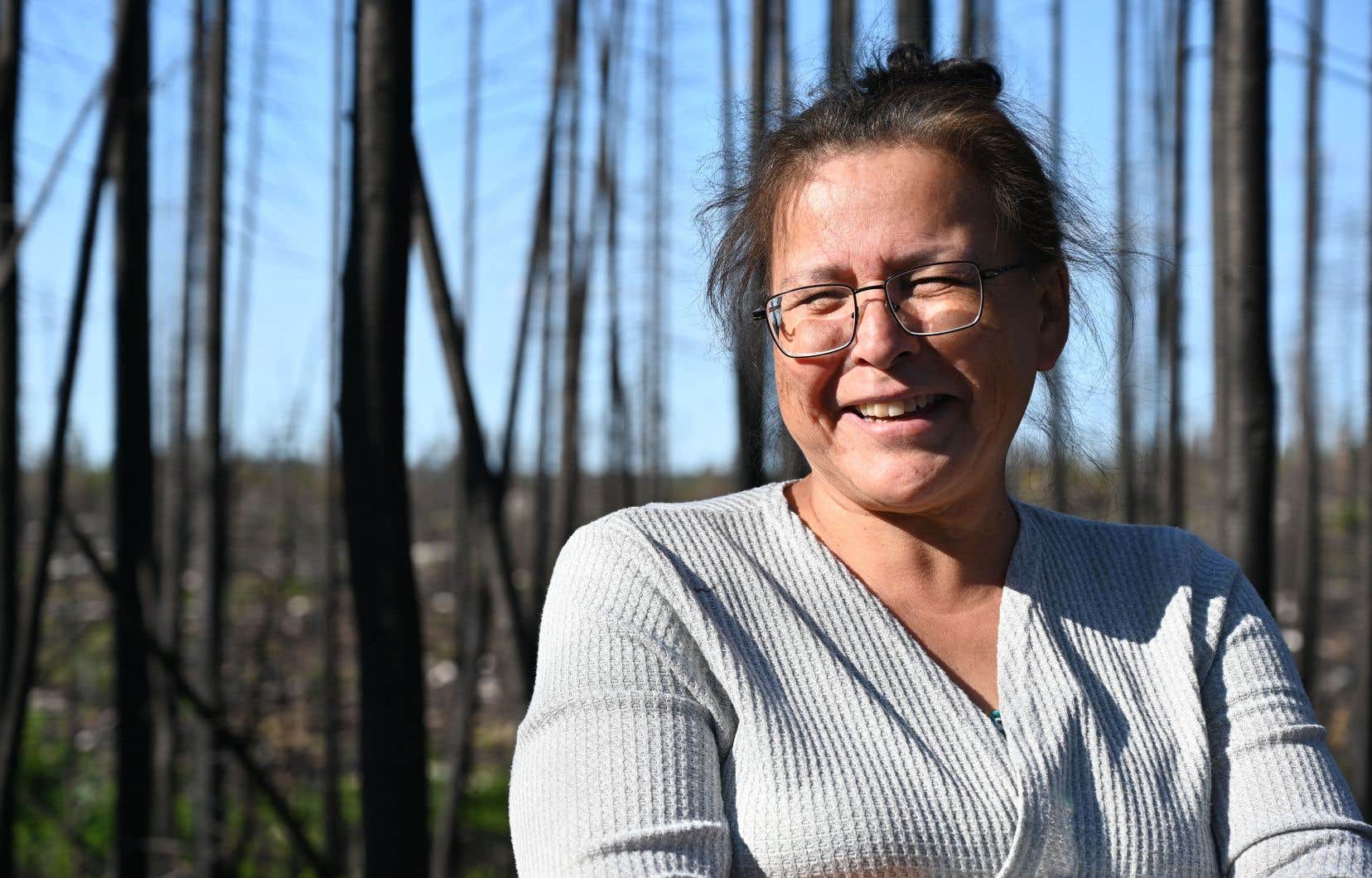Adrienne Jérôme is “heartbroken”. For this indigenous woman, summer will remain synonymous with a “big shock”. Because if Canada suffered the full brunt of the fires, no one paid a price as high as the first peoples.
Often isolated, located in the heart of large forests, these communities see their territories eroded by the flames and their way of life called into question.
“The evacuation in the middle of the night, with the sirens blaring… it was a real shock. The children were crying, did not want to leave their mothers,” says the former head of the Lac-Simon community in Quebec.
If the houses of this Anishnabe village were spared by the flames, all that remains of the immense surrounding areas of black spruce, these trees so characteristic of the boreal forest, are blackened skeletons.
“The forest that protects us has disappeared,” notes, moved, this woman, very respected in the village. “It’s our pantry that’s lost. There are no more small game animals, no hares, no partridges and then all the medicinal plants have disappeared,” explains the woman who raised ten children.
The historic fire season forced thousands of Indigenous people to flee their homes. Although they only represent 5% of the Canadian population, they nevertheless constitute nearly one in two evacuees.
Disappeared sacred sites
Fires are now “so dangerous and so fast” that evacuations are increasingly necessary, explains Amy Cardinal Christianson, researcher with the Canadian Forest Service.
However, for them, it is a real heartbreak, she explains, because “there is a lack of confidence in the fact that fire agencies are protecting what the person or the community values the most” .
It could be a hunting ground, a ceremonial site or even a herd of cattle, adds this member of the Métis people, one of the original populations of Canada.
“All our activities are linked to the forest. People do not realize the loss that this represents for us, it cannot be measured on a financial level,” explains Lucien Wabanonik, the leader of the community.
“Sacred sites, graves, meeting places have disappeared,” lists this man with slow gestures. “It’s as if our church had disappeared. »
“The fire will return”
This is the first time that the Lac-Simon community has been forced to evacuate due to forest fires. Although the region has been hit by fires in the past, they have never reached this magnitude. Most were triggered by lightning which struck very dry areas in early June.
“It smells like death now,” notes Adrienne Jérôme as she walks through the scorched lands where she is used to hunting small game with other women.
She says she cried for a long time with her sister, thinking about all the animals trapped by the flames. Since then, several ceremonies have been organized to honor them.
In indigenous communities, many are calling for a return to controlled cultural burning, an age-old practice. This technique, suppressed by European settlers, makes it possible to limit the extent that forest fires can take by eliminating part of the vegetation on the ground.
This produces “a mosaic in the landscape, creating or maintaining open grasslands, and favoring forests with lots of hardwoods” which are less likely to burn than softwoods, says Amy Cardinal Christianson.
“We are worried because we know that the fire will come back. The climate is fragile, we have always said it. A major shift must be taken,” believes chef Lucien Wabanonik.
But “today, if we are consulted, we are little listened to,” he regrets.
